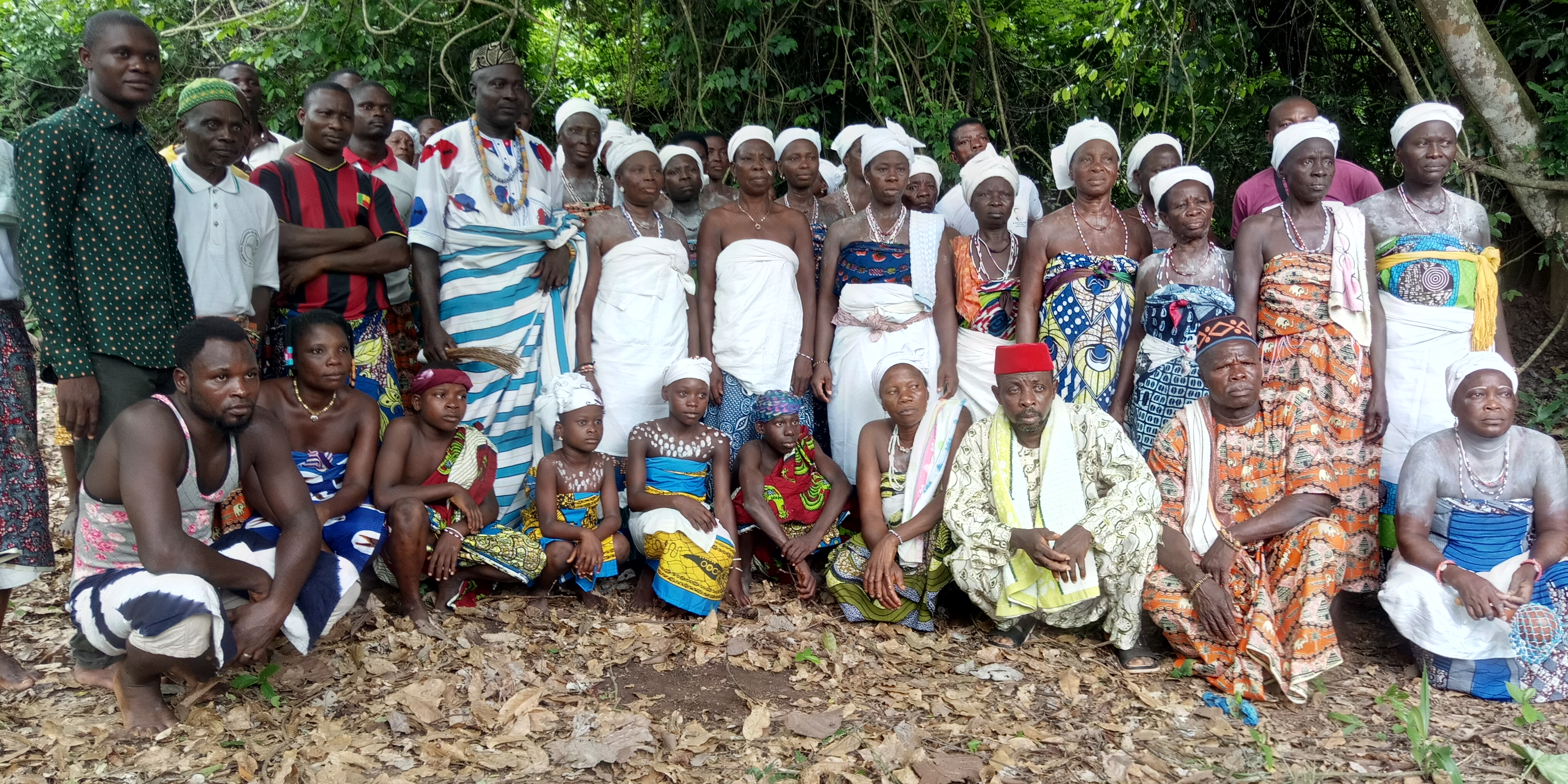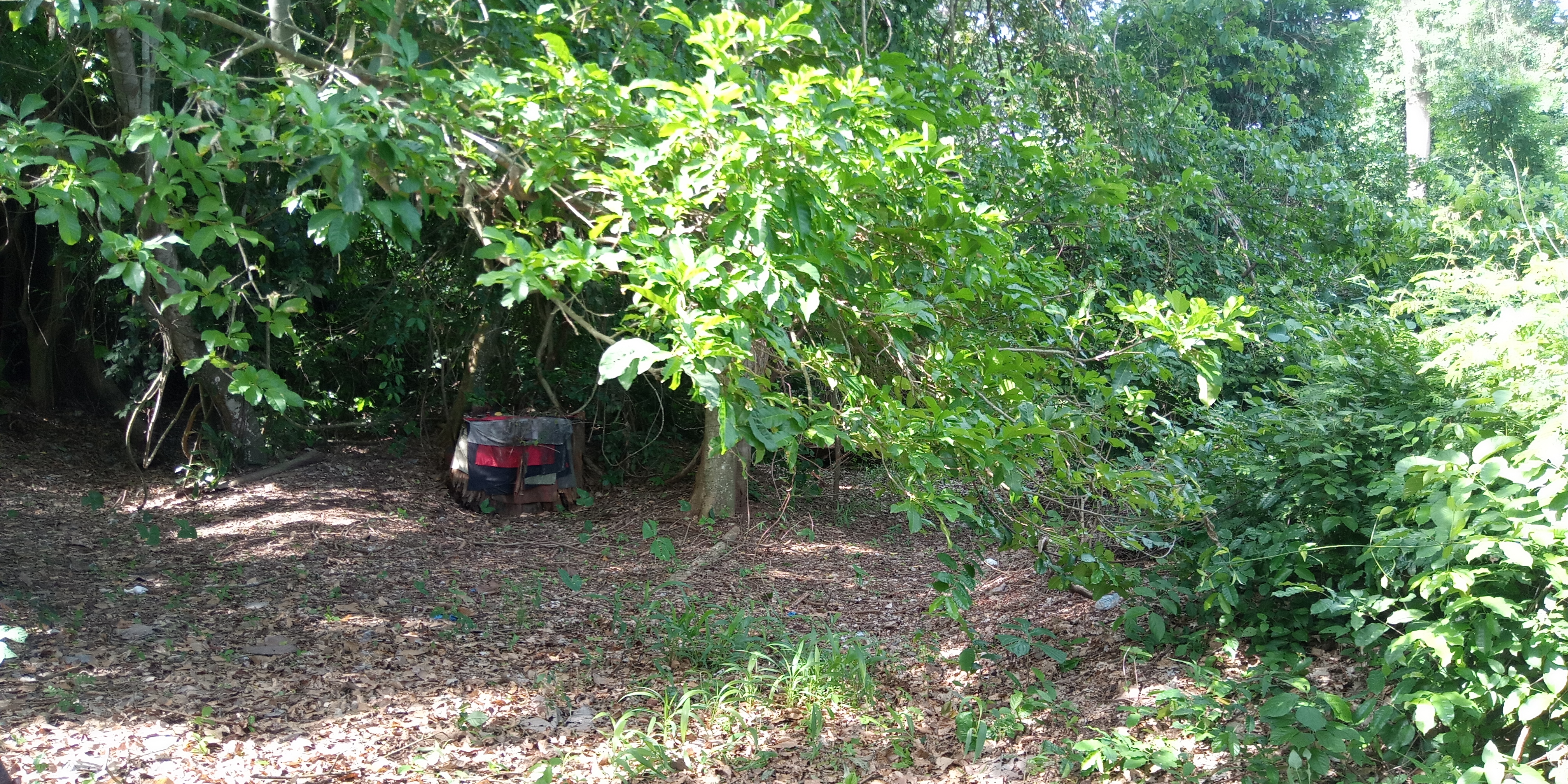Forêt Sacrée Houinyèhouévé, Bénin
Description
The Houinyèhouévé Sacred Forest is an ICCA covering 0.10km2 of land in Benin and is 500-1,000 years old. It is home to the Houin community in Lokossa, which consists of 184 people across 46 households who are directly involved in the management of the ICCA.
The sacred forest is a shelter for the deities of the community; Houinyèhoué, Dan, Lègba and Sakpata. And it contains a mixture of trees and panicum bushes, as well as areas for cultivation.
The main objective of the ICCA is preservation of the ICCA community’s culture and tradition, following in the footsteps of the ancestors. The community aims to maintain and improve natural resources, support traditional lifestyles, support sustainable livelihoods and conserve biodiversity and species.
History and Activities
The origin of the sacred forest Houinyèhouévé goes back to Assouhouinhouin, who was the founder of Houin. It is also believed to be have originated from the Watchibè, who had the ability to enthrone Kings. Around the year 1204, an epidemic caused Assouhouinhouin and his brothers to move to another area. Despite this, they still returned to the forest from time to time, to make rituals, sacrifices and worship, mainly to the spiritual figure of Houinyèhoué. Hence the name Houinyèhouévé and why this forest has such strong sacred values that are linked to the current traditions and customs of the community of Houin.

Prayer and healing ceremonies are regularly organised in the forest. The regent and his collaborators conduct the annual ceremonies, rituals and offerings to the deities in the interest of the community.
Conservation
The ICCA is proposed as a protected area by the national government, but the community does not yet have an official document that demonstrates this recognition. In 2012 the site was recognised as an ICCA through the Project for Integration of Sacred Forests into the Protected Areas System (PIFSAP). In 2019 it received legal recognition through a Town Hall decree. PIFSAP aims to improve the sustainable use of areas of global importance in and around the Sacred Forests of Bénin by integrating them into the formal system of protected areas (PAs), strengthening the legal and institutional protection and promoting community co-management of the sacred forest.
The community area of Houin (Houinyèhouévé) is characterised by a plant cover made up of swamp forests and mosaics of fields and fallows. The swamp forests are difficult to access and consist mainly of Ficus Trichopoda. There are some herbaceous areas, interspersed by palm trees or Acacia trees.
There are also mosaics of fields and fallows. The fields consist of formations of Elaies guineensis, fields of Zea mays, and Manihot esculenta. There are tree species like Triplochiton scleroxylon, Terminalia superba, Ceiba pentadra. Fallow land is dominated by Chromolaena odorat, Lonchocarpus sericeus and grasses.
The fauna of this ICCA includes mammals, birds, reptiles and amphibians. You can find sitatunga (Tragelaphus spekii), duikers (Cephalophus rufilatus, Syvicapra grimmi) rodents and lagomorphs, monkeys, squirrels, deer and agoutis. There are also some species of birds.
Management and Governance
This ICCA is communally owned, and managed by a local delegated committee, supported by a town hall level committee. Decisions are made by local communities members of the royal court, and elders. The ICCA is recognised in sub-national law (not national) and by other neighbouring communities.

The ICCA has been under threat from extraction (e.g. hunting, mining or logging, or fishing), climate change and a lack of appropraite recognition. However, with the intervention of NGOs and the establishment and strengthening of the local management committee, the threats are diminishing. The Houin community have received support to develop income-generating activities that are not reliant on exploitation of forest resources. This has helped to significantly reduce the threats. But the community still need legal support. Managers also need technical and financial assistance and equipment so they can best manage and conserve the ICCA’s values and resources for future generations.
This case study was originally published by UNEP-WCMC in February 2021. The content was provided by the custodians of this ICCA. The ICCA has been self-declared and has been through a peer-review process to verify its status. More details on this process can be found here. The contents of this website do not necessarily reflect the views or policies of UN Environment Programme or WCMC.